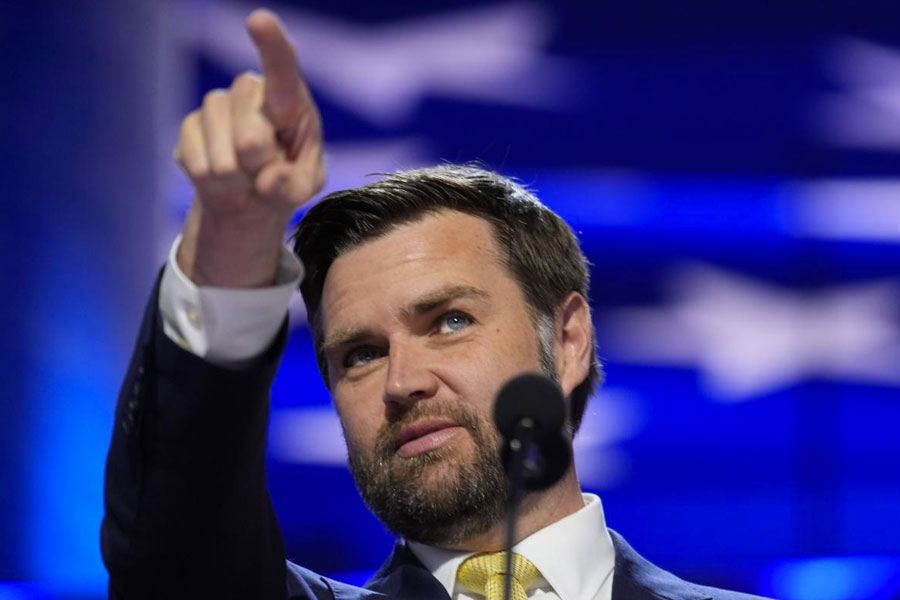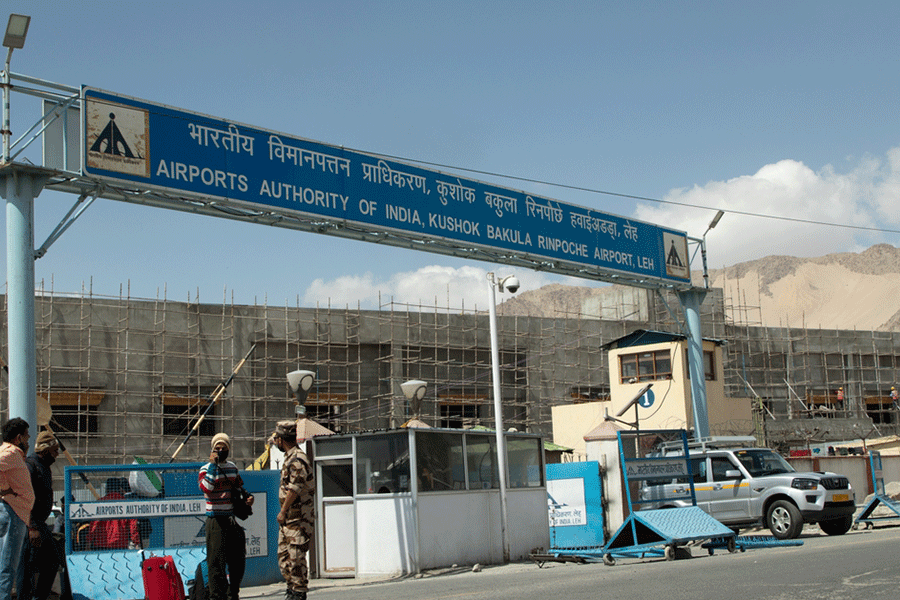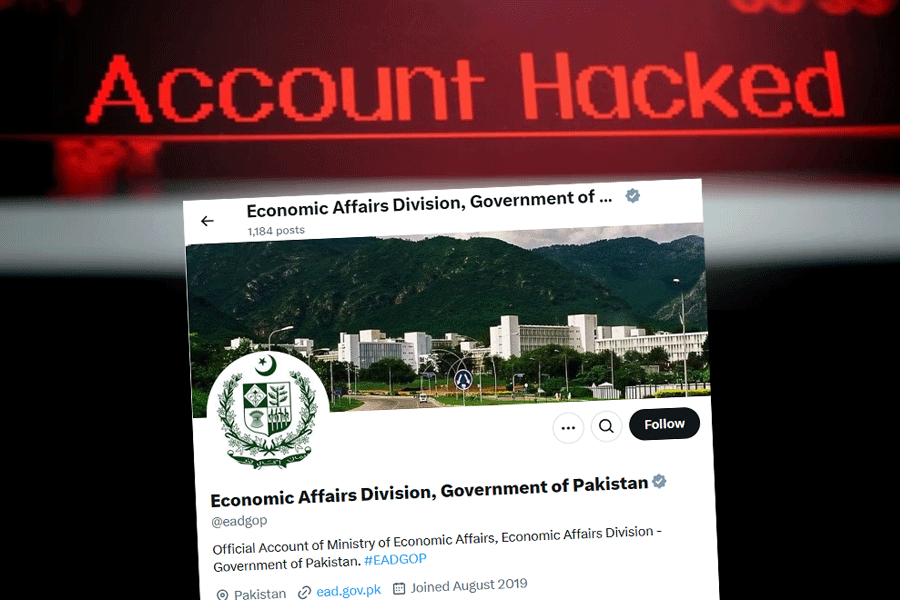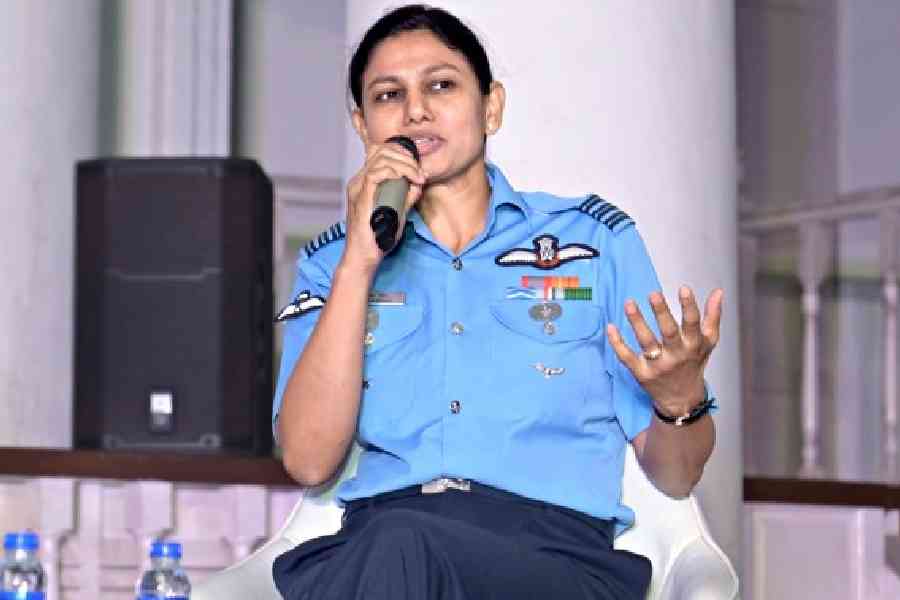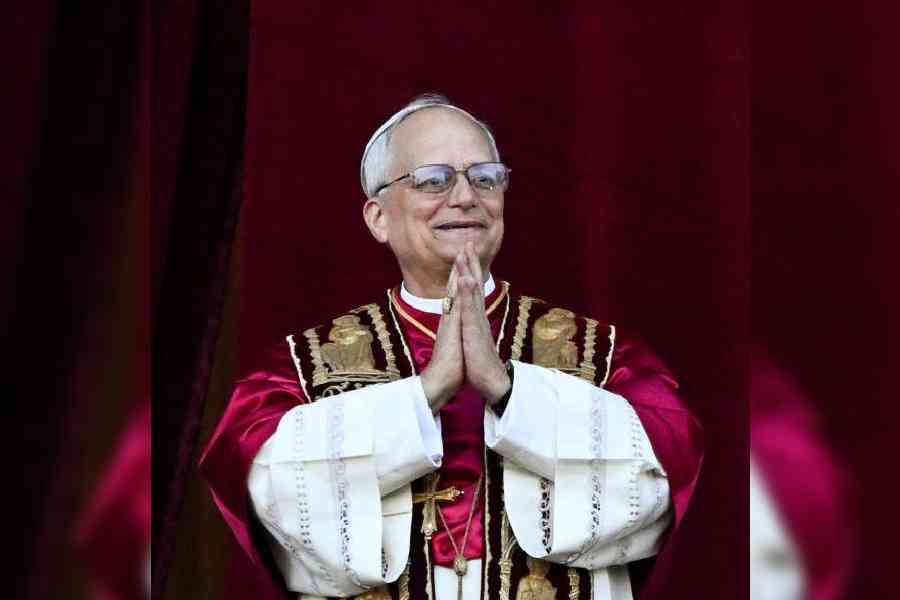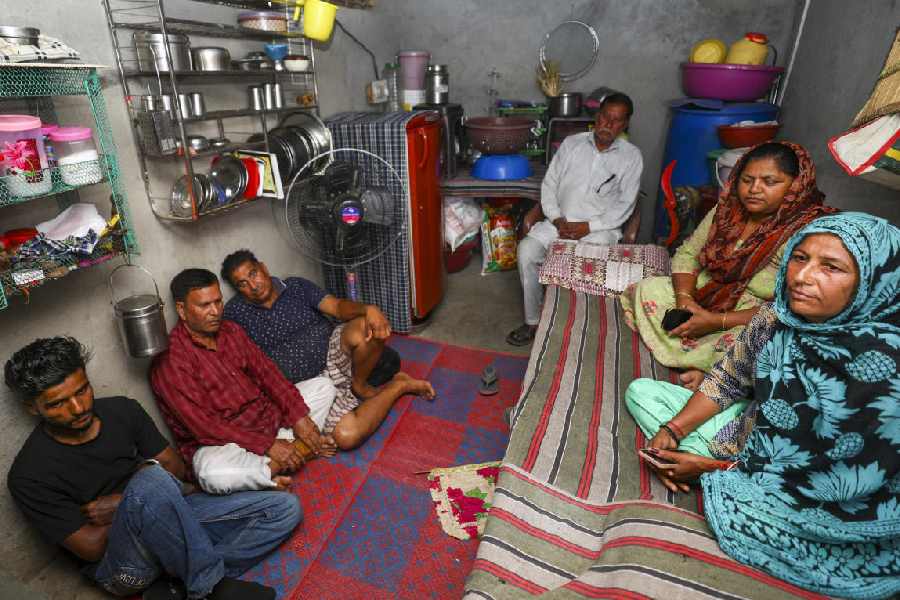 |
| ‘Nagaland is a land of myriad tribes and sub-tribes all very proud of their unique character. Will their aspirations ever be fulfilled?’ |
The battle-scarred Nagas are waiting for normalcy to return to their lives. For half-a-century they have fought a battle that is neither here nor there. Then in the early part of the 21st century wisdom dawned upon the Naga elders that they needed to share their just struggle with the rest of India. And thus began the historic journey of conscience. Members of Naga Hoho, the apex body comprising leaders from all Naga tribes visited Rajghat, the cremation ground of the Mahatma, as a symbolic gesture that they are henceforth on the lookout for a non-violent settlement of their problems.
The Naga Hoho, although a body comprising only male members, claims to represent the collective consciousness of the Naga people. But deep within the Naga intellectual class, voices of dissent are questioning why the wisdom of a woman’s voice is missing within the Hoho. And why the Naga Mother’s Association (NMA) which has bandaged the wounds of conflict for 50 years is only an add-on which accompanies the Hoho when they undertake their various diplomatic missions to Thailand.
Gender equity is perhaps an issue that is best sought to be buried at this juncture when the threads of peace are carefully and delicately woven and any dissent from any quarter at this point of time might upset the applecart.
Future vision
Khushwant Singh in his recent article, “Keeping everyone happy” perhaps echoes what most of us do — the incoherence of the Naga demand. He says the demands have never been explicitly spelt out and most of them are non-negotiable. Khushwant Singh of course speaks like a true blue Indian who never believed in the idea of Khalistan and, therefore, is of the firm opinion that not a single inch of Indian territory can be bartered away without a fight. Do the Nagas understand and accept this?
From my own interface with Naga friends, I get the feeling that they do understand India’s dilemma very well and perhaps are even looking for ways and means to help India take a stand that will not compromise its integrity. But how can this happen?
Members of the Hoho believe it is possible to negotiate for a Bhutan-like status — sovereign country with all help and assistance from India.
The concept appears sound enough, except that Bhutan has an ethnic homogeneity that is easier to sew together but Nagaland is a land of a myriad tribes and sub-tribes all very proud of their unique character. Some of these tribes have been in the forefront of Naga politics and have ruled the roost for as long as one can remember. Others have remained in the backwaters and are looking for their moment of glory, post the Naga settlement. Will their aspirations ever be fulfilled?
The Bhutanese are intrinsically peace-loving because of the strong influence of Buddhism. The Nagas have been warriors from times immemorial, inexhaustibly engaged in intra-tribal feuds and proud to carry round their necks the number of heads they have to their credit.
The head-hunting era is thankfully over, but has the intra-tribal rivalry ceased completely? The fact remains that there are still a lot of unresolved jealousies/rivalries operating within the Naga society. These have been temporarily shelved for a greater cause. But are we sure that these will cease once the dream of a sovereign Nagaland is attained?
The question of intra-tribal conflict being such a tough nut to crack and a real issue to contend with, some members of the Hoho raised this point during their meeting with Th. Muivah and Isak Chisi Swu during their last dialogue at Bangkok. But apparently Muivah did not like this issue to be flagged. He put everyone at rest by saying that they would cross the bridge when they came to one. Undoubtedly, the issue is thorny and could even become the Achilles heel of the two Naga leaders who have led the movement for so long. They perhaps in their wisdom believe that a sovereign Nagaland will put to rest a life-long historical reality that has followed the Nagas like a shadow.
At crossroads
That aside, what does the NSCN (Khaplang) have to say? What is its concept of a sovereign Nagaland? Does it match with that of the NSCN (I-M)? The Naga National Council (NNC) now led by Adino, late A. Z. Phizo’s daughter, is also a force to contend with. She, too, has developed her own idea of a sovereign Nagaland which again may be different from that of Muivah and Khaplang. Where is the meeting point unless these three leaders of different persuasions sit across the table and lay down the common minimum ground rules? Unless the Indian government talks to all the three leaders, things could boomerang. All the peace efforts would then go in vain.
Interestingly, Nagaland is headed for the Assembly elections early next year, possibly by February-March 2003. Nagaland’s constitutional politics has always been in conflict with its nationalist separatist agenda. The talks between the Centre and the NSCN (I-M) are scheduled to be held soon.
Campaign for the Assembly elections will kick-start immediately after the New Year celebrations are over. This is also a ticklish situation. How can an election defined by the Constitution of India take place while talks are going on for a sovereign Nagaland? Like Khushwant Singh, I am sure all Indians are confused over this peculiar scenario. Besides, the grand old man of Naga politics, S.C. Jamir, is unlikely to want to shelve elections. His stakes as always are in the elections.
As in the past, the NSCN (I-M) is against having elections till a final solution to their demands is reached. Naga civil society groups, if the Hoho can be called that, is also against opportunistic politics which they believe Jamir has unabashedly practised over the decades. His action, they claim, has jeopardised efforts of having dialogues with India for a lasting solution. His selfish politics has pushed back all efforts at solving the Naga imbroglio. No wonder the NSCN (I-M) is against having Jamir at the negotiating table. But can anything happen in Nagaland without the consent of Jamir? Whether all Nagas like it or not he has been at the helm of Naga politics for too long. He is bound to have a following of his own, at least that of his tribe, the Aos. When asked to choose between Jamir and Muivah, the Aos will without a doubt choose the former. The Thangkhuls, if we know Naga tribal loyalties, will of course opt for Muivah without blinking an eyelid.
Not a bed of roses
Tribalism-linked politics is, therefore, what is likely to cause more problems for the people of Nagaland after the settlement with India. Hopefully, India will not interfere in the choice of leadership. But will the Nagas be able to decide on their own? Unless the leadership issue is thrashed out now and a consensus emerges from within society, leaving things to be settled in the future will lead to another backlash — this time more virulent and bloody than any we have witnessed in the past.
Even while the people of Nagaland wait for the settlement, one feels that there is an urgency for some kind of consensual politics to evolve. This is not going to be a quick or easy attempt. It is a lengthy process which requires a people-to-people contact and a search for wisdom which may not necessarily be indigenous. That wisdom could come from elsewhere if the Nagas have an open mind. The Naga struggle has gone on for so long, it has sucked up all the ingenuity and flashes of wisdom and wit that are so necessary to find answers to complex questions.
I have all respect for the Naga leadership, particularly that of the Hoho and the NCSN (I-M), both of which represent a very mellow, very sane elderly statemanship which is evident from the measured tones in which they speak and their attempt to reach out to Indian civil society.
That the Hoho is genuine and sincere about its desire to see a negotiated settlement in its lifetime, there can be no doubt. But what about the NSCN (I-M) and K and Jamir and Adino? They all believe they must have strong and winning stakes in Nagaland’s political future whatever be the outcome of the settlement. The Naga people would need a solemn commitment from them that they too want peace as much as everyone else. That their idea of peace is similar to what the people want. Only this commitment can bring some coherence into the Naga situation.


